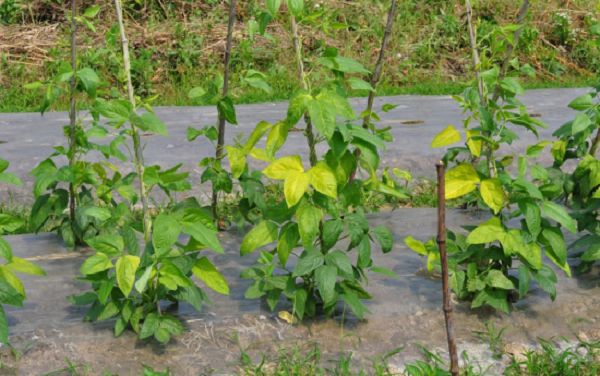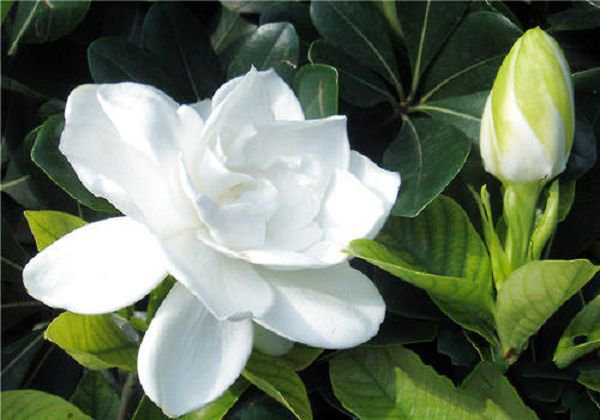What are the yellowing leaves? Yellow leaves of flowers may be caused by the lack of certain elements.

The leaves of flowers sometimes turn yellow during their growth. Especially for beginners, this makes them very confused. What is the reason why the leaves turn yellow? Next, please come with the editor to see the reason why the leaves of potted flowers turn yellow.
Potted flowers lack what leaves will turn yellow
1. Lack of water
Flower cultivation leakage watering or long-term watering half waist water (that is, wet and dry), affect the absorption of nutrients, but also easy to cause dull and dull leaves, wilting and drooping leaves. First, the lower old leaves are aging, and gradually withered and yellow from the bottom up. At this time, it needs a small amount of watering and spraying, so that it can be gradually restored and then transferred to normal watering.
Second, lack of fertilizer
There is no application of ammonia fertilizer or no change of soil for a long time, and the lack of nitrogen and other nutrient elements in the soil leads to the weakness of branches and leaves, and the leaves are thin and yellow. It is necessary to pour the pot in time and gradually apply rarefied liquid fertilizer or compound flower fertilizer into the new loose and fat cultivated soil.
Third, the temperature is too low
Winter room temperature is too low, about sexual love high-temperature flowers are often vulnerable to cold damage, resulting in yellow leaves, seriously withered and died. If the room temperature is too high, the transpiration of the plant is too high, and the water and nutrients in the roots are in short supply, the leaves will turn yellow. Please pay attention to adjust the room temperature in time.
Fourth, lack of light or ventilation
If the sun-loving flowers are placed in the shade or lack of light for a long time, it will lead to long branches and leaves, thin and yellow leaves, no or little flowering. Be careful to move the flowerpot to the sunny place.
If too much nitrogen fertilizer is applied, the branches and leaves will grow luxuriantly, coupled with the long-term unpruned, resulting in a lack of light in the inner chamber branches and leaves, which is easy to cause the leaves to turn yellow and scattered. Reasonable fertilization and enhanced pruning should be applied to make it ventilated and transparent.
Lack of necessary elements
Finally, it should be mentioned that the yellow leaves of potted flowers are sometimes caused by lack of elements, and the judgment and prevention of nutritional deficiency of flowers.
The nitrogen deficiency plant is thin, the branches are slender and hard, and the leaves and florets are small. The leaf color from the old leaf to the new leaf gradually changes from thick green to light, and then appears reddish purple, until the wilting yellow falls off, and in serious cases, the whole plant loses green.
Prevention and treatment methods to increase the application of rotten human feces and urine, cake fertilizer, barnyard manure or ammonium sulfate, urea, ammonium nitrate and other fertilizers.
The phosphorus-deficient leaves changed from dark green to copper, and the veins (especially the petiole) were yellow and purplish. It is difficult to form flower buds, and the flowers are small and light in color, resulting in poor fruit development, or even early withering and withering.
The prevention and treatment methods include bone meal, fish meal, poultry fertilizer or calcium superphosphate, ammonium phosphate and potassium phosphate (phosphorus and potassium compound fertilizer), usually with about 0.10% aqueous solution as extra-root topdressing.
The potassium-deficient plants are short and the stems are soft and easy to lodge. The leaves often wrinkle, the old leaves appear black-brown spots along the leaf edge by the leaf tip, the leaves turn yellow around the leaves, and the pulse in the middle and leaves is still green.
The control method is to increase the application of plant ash, 1%-2% potassium chloride aqueous solution (bulbs and flowers are prohibited), 0.30%-0.50% potassium nitrate aqueous solution as extra-root topdressing, and inorganic fertilizers such as potassium phosphate.
The calcium-deficient tender leaves are green and wrinkled, the leaf edges are curled and have white stripes, the flowers are blocked, and the new leaves are difficult to unfold or distorted in a diseased manner.
In the first half of the month before sowing or potting, applying an appropriate amount of calcium chloride in the soil can increase calcium and disinfect (acidic flowers are prohibited), and calcium nitrate can also be used as topdressing.
The growth of mg-deficient plants was not exuberant. From bottom to top, the old leaves gradually turn green and white from the edge of the leaves to the center, and there are various spots on the veins, and finally the whole leaves turn yellow.
The prevention and treatment method was sprayed with 0.20% 0.40% magnesium sulfate aqueous solution for 3 consecutive times, each time at an interval of 7 to 10 days. Soils with severe magnesium deficiency are mixed with 5-10 kg magnesium sulfate per mu and mixed with base fertilizer in autumn or winter.
The sulfur-deficient tender leaves yellowed from the leaf veins to the yellowing of the whole leaves, and the root system developed abnormally.
Iron deficiency ranges from tender leaves to yellowing of old leaves.
The prevention and control methods of sulfur deficiency and iron deficiency can be sprayed with 0.30% ferrous sulfate solution for 3 times in a row, each time with an interval of 1 week. At the same time, 0.20% urea hot metal solution can be used for extra-root topdressing.
Related
- What if the leaves of potted flowers turn yellow?
- Florescence Control of several Flowers
- Anti-freezing technology and post-freezing nursing technology of flowers
- What is the classification of flowers? What are the common methods of flower classification?
- Prevention and control of alkali and acid damage of flowers in courtyard
- Technology of Anti-freezing and restoring growth of Flower seedlings in greenhouse and greenhouse
- How does flower fertilization not hurt the root? Fertilization technology of flowers
- Key points of disinfection in flower greenhouse
- Several pesticides that are banned or used cautiously in flowers
- How to fertilize the flowers that watch the leaves?



